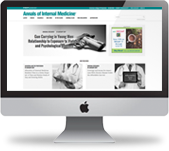Practice Tips: Ancillary procedures are win-win-win
There are several ways to increase practice revenue, including patient volume, better collections, or better contract rates.
How, in this era of continually declining reimbursement, does a practice survive financially? Managing money has a simple equation: Revenue minus expense equals net income. Practices can only go so far to decrease expenses, so it is more efficient and arguably more effective to focus on the revenue.
Increasing revenues can be done several ways. One is by increasing patient volume, but we all know that is not always the desirable way to go. Another way is by improving collections, either by improving contract rates, which may or may not be feasible, or by good and accurate billing to and collecting from both payers and patients. There are myriad other business office strategies, but they may not have the impact of simply increasing the relative value of the services provided.
Offering ancillary services in your practice is a triple win of high-quality, convenient care for the patient; professional and personal satisfaction for the physician; and often (but not necessarily) profit for the practice. Patients like having everything done at once in the same place, and getting more immediate results from their trusted primary care physician can improve the treatment plan and outcomes. Physicians and assisting staff find these services satisfying and interesting, in addition to straight evaluation and management work. And finally, while the bread and butter of primary care may be providing evaluation and management services, reimbursement for procedures (and their higher Relative Value Units) tends to be higher.
The Herbert S. Waxman Clinical Skills Center at Internal Medicine 2014 in Orlando, Fla., will offer training in several high-value ancillary services that internists can do in their offices. A few examples of courses include skin biopsy and cryosurgery, toenail removal, incision and drainage of abscesses, and arthrocentesis and bursal injections. Some diagnostic testing, such as ankle-brachial index by Doppler, echocardiography, and abdominal and vascular ultrasound, may also be good choices for some practices. Once it has been determined that the reimbursement will exceed the costs to provide the service, it is important to use proper modifiers and to bill correctly.
Not everything is a good fit for every practice. What services to provide will depend on physician interests, adequate training, and community and patient needs. To help internists create a cost-benefit analysis, ACP's Financial Management Toolkit (ACP membership required) can help project expenses and reimbursement of a new service or procedure. And, at Internal Medicine 2014, the Waxman Clinical Skills Center will provide professional, hands-on training in a variety of office-based and outpatient procedures. Check out the schedule.



